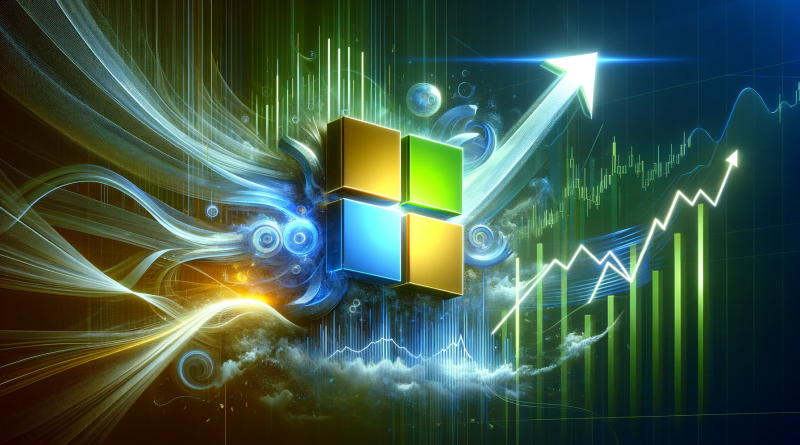Microsoft emerges as the definitive victor in the OpenAI power struggle, resulting in a 1 percent surge in its shares.
Microsoft CEO Satya Nadella demonstrated swift and instinctive leadership when he personally intervened in the tumultuous situation unfolding over the weekend at OpenAI, the prominent generative AI company. Nadella’s decisive actions during the weekend resulted in a significant achievement.
Devoting hours to negotiations, he brokered a deal that brought Sam Altman, the ousted CEO of OpenAI, on board to lead a new subsidiary within Microsoft, dedicated to AI innovation. This subsidiary would also incorporate OpenAI co-founder Greg Brockman and other departing employees who aligned with Altman’s vision.
This development represents a major triumph for Microsoft, as it secures Altman’s expertise in the thriving field of generative AI. Altman and Brockman embodied the growth-focused aspect of OpenAI’s business. OpenAI had been attracting investments valuing the company at an impressive $80 to $90 billion. Acquiring OpenAI outright would have entailed a substantial financial commitment, but now Microsoft gains access to OpenAI’s intellectual capital and potentially its AI models at a substantial discount, constituting a significant bargain.
This news resonated positively with the stock market, as Microsoft’s shares surged by over 1 percent upon the opening of trading on Monday, propelling the company’s market value to a record $2.78 trillion.
However, the situation took an unexpected turn on Monday morning. A majority of the remaining OpenAI employees reportedly sent a letter to the company’s board, threatening to resign unless the board reinstated Altman and Brockman. If the board resigns and Altman and Brockman return, OpenAI might embark on even more aggressive growth, potentially without the constraints of a safety-focused approach.
Such a scenario could still benefit Microsoft, given its substantial investment in OpenAI and its share in the company’s profits. Nonetheless, the rapid growth and competitiveness of OpenAI in generative AI may introduce some tension between the two organizations. Nevertheless, this partnership grants Microsoft valuable access to technology and expertise, positioning it favorably against competitors like Amazon AWS and Google in delivering powerful AI-infused cloud solutions to enterprise clients.
The likelihood of Altman and Brockman’s return to OpenAI remains uncertain, as the existing board seems determined to maintain the company’s current trajectory, even if it means dissolution. Microsoft, however, has offered positions to all OpenAI employees should they decide to join.
If OpenAI were to disband, questions would arise regarding the fate of its original AI safety mission, which held significance for many of its employees. Microsoft must ensure stability in this transition to prevent frustration and distractions among talented employees who may consider other options.
Another significant development on Monday was the alignment of co-founder Ilya Sutskever against the OpenAI board, emphasizing the need for safeguards around OpenAI’s large language model (LLM) technology. This could result in Sutskever leading the company’s safety mission within Microsoft or within OpenAI, should the board resign and employees stay.
Earlier in the weekend, there were efforts to reinstate Sam Altman as the OpenAI CEO, supported by Nadella and others. However, the board ultimately rejected Altman and appointed Emmett Shear, the former CEO of Twitch, as OpenAI’s interim CEO.
In response, Nadella offered Altman a role within Microsoft to continue his mission, with specific details of the arrangement undisclosed. Presumably, Nadella provided a compelling incentive package, considering Altman’s lack of direct shares in OpenAI and the potential risks associated with starting a new company from scratch.
Nadella expressed anticipation for Altman to join a new group focused on setting a fresh pace for innovation within Microsoft. Microsoft’s commitment extends to continuing its collaboration with OpenAI, launching planned features for its products and partners, while also establishing a new AI research team under its umbrella. This strategic move will grant Microsoft easier access to AI capabilities for its products, including Windows and Teams.
In conclusion, Satya Nadella’s swift actions and negotiations have reshaped the landscape of AI innovation, securing valuable assets for Microsoft and potentially opening new horizons in the field of generative AI. Microsoft’s commitment to AI research and innovation remains unwavering, bolstered by its partnership with OpenAI and the incorporation of key figures like Sam Altman.

